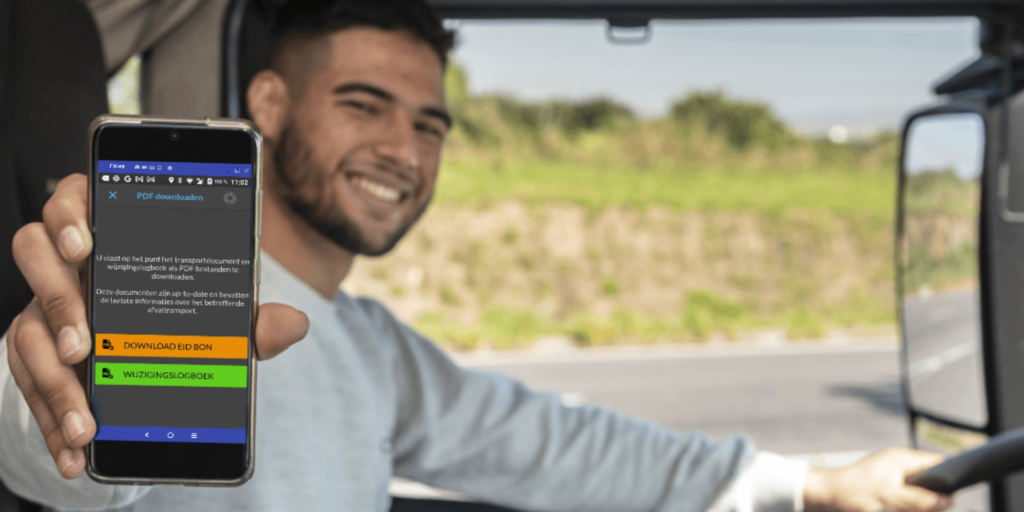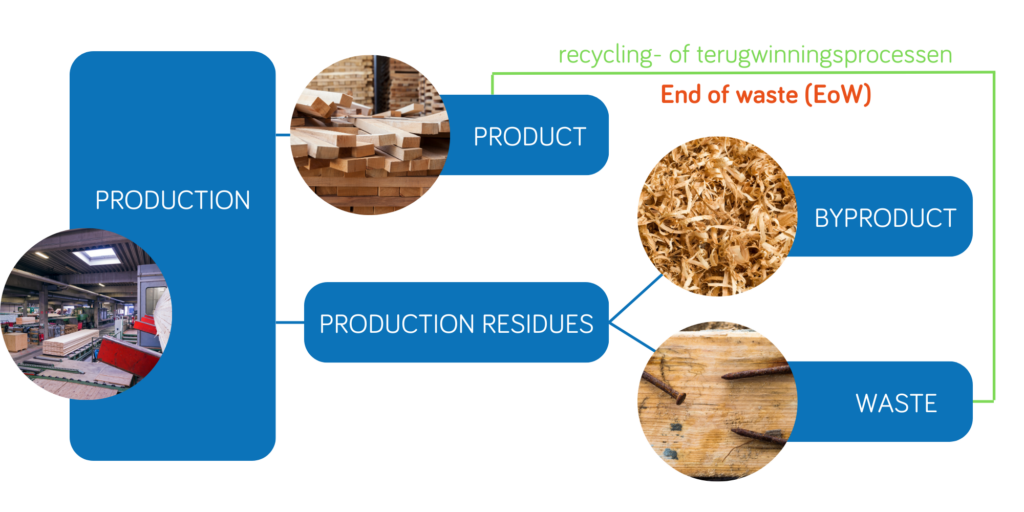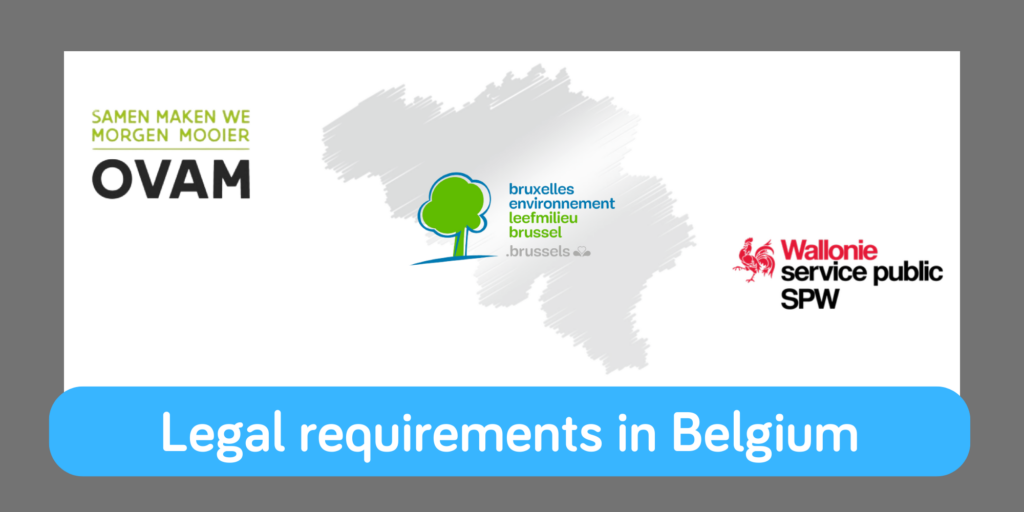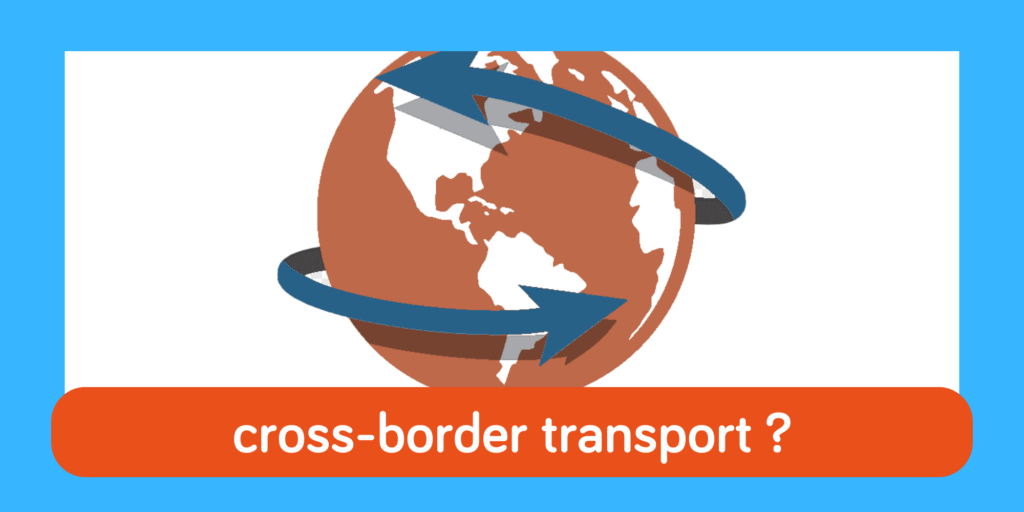ubiDOCS is the solution to create your own digital transport documents or those recognized by the authorities (e-CMR / e-waste identification).
No more paperwork in the driver’s cab … through an application they have all the transport documents they need to validate activities, collect signatures, record changes and deviations during transport, and the forms validated by authorities to show to inspectors during an on-site inspection!



This page will be continuously updated as the product develops… if you do not find the answer to your question, please email with your detailed requirements:
You are a waste COLLECTOR and ready to test ubiDOCS?
Get in touch now and fill in the form… we’ll get back to you as soon as possible with instructions.
Once on board, you will get full access to our Knowledge Center with many more relevant information’s.
Are you a TRANSPORTER working for a COLLECTOR who has chosen to work with ubiDOCS?
Click on the link below to register and get more information:
ubiDOCS for the transport of waste
What is WASTE ?

Every good has a status: it can be a product or a waste
Product: subject to laws and regulations on product standards
Byproduct: no applicable waste laws, a by-product has never been waste
→ federal jurisdiction
Waste: subject to laws and regulations on waste
→ regional jurisdiction
The classification of the object must be able to evolve: notion of End of Waste or ‘End of Waste’
Questions about waste transportation
Flanders
source = website OVAM
An identification form must be present with every shipment of waste, from 2023 everything will be digital, with a transition period of 1 year.
– unique sequence number; in the case of a digital identification form, the unique sequence number starts with a three-letter code that identifies the system used to create the identification form;
– date of transport;
– name and address of the waste producer and the address of shipment of the waste;
– name, address and registration number of the collector, waste dealer or broker, if applicable;
– name, address and registration number of the transporters;
– name, address and company number of the processor, indicating the type of processing (R or D code);
– description, quantity in tons and the EURAL codes of the waste.
– the geo-location of the start of the shipment and the geo-location of the delivery of the waste by the collector, waste dealer or broker or the waste producer who makes his own arrangements for his waste.
The hazardous waste identification form additionally includes the following information:
– physical properties
– chemical composition
– type and number of packages
– special instructions for transport, if applicable
This information must be completed before the shipment begins, and it must be signed and dated by the waste producer who makes his own arrangements for his waste or by the collector, waste dealer or broker.
If the quantity cannot be determined before departure, the quantity may be completed at the destination and a copy of the identification form, indicating the quantity, must be delivered to the waste producer.
The waste producer who delivers his waste to a registered collector, waste dealer or broker shall receive a copy of the identification form completed to this point and keep the copy for a period of at least five years.
At the destination, the processor shall date the identification form and sign it for receipt. He shall receive a copy of the completed identification form on site and shall keep that copy for a period of at least five years.
The waste producer making his own arrangements, collector, waste dealer or broker shall retain the original, fully completed identification form for a period of at least five years.
The information is completed, signed and dated by the waste producer making his own arrangements for his waste or by the collector, waste dealer or broker before the shipment begins. If the quantity is not clear before departure, it may be completed at the destination, and a copy of the identification form, indicating the quantity, shall be delivered to the waste producer.
The carrier may commence the transport only on the condition that the identification form is present. There are some exceptions, to be read at the top of this web page.
The waste producer receives a copy of the completed identification form and keeps the copy for at least five years.
During transport
The completed and signed identification form accompanies the waste. The transporter presents the form upon request of inspection services.
At the destination
If the quantity was not already filled in, it is completed and a copy of the identification form, indicating the quantity, is delivered to the waste producer.
The identification form is dated and signed for receipt by the processor. He receives a copy of the fully completed identification form on site and keeps the copy for at least five years.
After shipment
The waste producer making his own arrangements or the collector, waste dealer or broker keeps the completed identification form for a period of at least five years.
If the waste is transported further after treatment or intermediate storage, a new identification form is required, except if the intermediate storage is a loading or unloading quay for intermodal transport. You always use the R and D code of the next step in the processing.
The only exception to the requirement for digital identification forms applies to cross-border shipments of waste.
These shipments must be accompanied by a transport document or Annex VII document that meets the requirements of the EVOA regulation.
If these are paper documents, this is allowed because the European EVOA Regulation is higher in the legislative hierarchy than Flemish legislation.
The legislation surrounding CMR and identification forms are independent of each other.
ubidata has chosen to use the model proposed by OVAM (identification form for non-hazardous waste and identification form for hazardous waste).
This model is not binding. Company-specific forms, CMR forms, order forms, etc. can therefore also be used, if they contain at least the data requested above.
The driver of the vehicle must then be clearly informed that this form is valid as a waste identification form.
ubidata offers other templates and formats for transport documents.
The e-CMR is one of them.
=> Read more about CMR
Brussels Capital Region
Source = Brussels Environment (only NL and FR versions available)
Digitization is not yet mandatory, but traceability is.
1. the traceability document delivered upon transfer of waste that accompanies the waste during transport;
=> read more (only NL and FR versions available)
2. a register containing all traceability documents;
=> read more (only NL and FR versions available)
3. a report summarizing the various data contained in the register.
=> read more (only NL and FR versions available)
any document or contract delivered to the waste holder/producer by the collector, dealer, broker;
any document or contract delivered by the collection or processing facility.
A traceability document can be an invoice, CMR waybill, shipping note, weighing slip, contract … on which all the necessary information is given.
So it can be the e-id voucher recognized by OVAM or the ‘lettre de voiture’ recognized by SPW.
This document must be signed by the person receiving the waste and must contain the following information:
For non-hazardous waste
– the date of transport, deposit or, if applicable, the frequency of collection;
– the name, address and company number of the waste holder, as well as the address at which the waste is taken, if different;
– the name, address and registration or approval number of the collector, dealer or – – broker, if applicable;
– the name, address and registration number of the carrier(s), if applicable;
– the name, company number and address of the operating office of the company where the waste is delivered;
– the type of treatment according to the lists in Annexes 1 and 2 of the Waste Ordinance (code D or R);
– the quantity in tons, kilograms, m³, or if applicable, the summary statement of the quantities collected;
– the description of the waste;
– the waste list code.
For hazardous waste: additional information
– composition and physical properties of the waste;
– type and number of packages;
– the specific instructions for transport, if applicable.
=> Read more (only NL and FR versions available)
In the register, you must regularly collect, in chronological order, all traceability documents concerning the operations you carry out in the context of your waste management.
This waste register must be kept for at least 5 years and presented to the competent authorities upon request.
– holders of waste other than household waste, for the waste they produce or possess
waste transporters, for the wastes they transport
– Waste DEALER for the waste it manages
– operator of a waste collection or processing facility for the waste it collects and/or processes: it updates the register daily and, as holder, also keeps a waste register.
Dual use of the paper and electronic document is not allowed for one shipment.
Brudalex stipulates that electronic traceability documents can be used after prior approval by Bruxelles Environnement of the document and the supporting software.
Brussels Environment, in collaboration with the other regions and key stakeholders, has drawn up a set of criteria that a system for the management and delivery of electronic traceability documents for waste must meet.
=> Read more
An important part of traceability is the mandatory waste report by the Waste DEALER.
This report is submitted annually by March 15 according to the requirements included in Brudalex.
As communicated during the waste management training sessions, the waste report has been changed in content and form.
Reporting forms and an instruction note can be found on the Reporting forms page and on the web pages of Bruxelles Environnement.
BRUDAWEB (Bruxelles/Brussel-Déchets-Afvalstoffen website) is a web platform developed for submitting your waste report(s). It facilitates the exchange of data between Bruxelles Environnement and its partners.
Any other operator (holder and transporter) will only have to submit a report upon request.
They will be notified one year in advance and must use the BRUDAWEB web platform.
They can also be the subject of a one-time request for information as part of an inspection.
=> to BRUDAWEB
The following ADR transport documents are required
– Waybill (domestic transport) or CMR waybill (international transport, but can also be used for domestic transport in Belgium))
– Tremcard (emergency transport card) / written instructions – Packing list
– Packing list
– Other required documents on board: transport license, Eurovignette, cleaning certificate, ADR control form, etc.
ubiDOCS can be used to transport well-defined animal by-products (i.e.
Category 3 catering waste with EURAL 20 01 08 and Category 3 used frying oil – with EURAL 20 01 25).
ubiDOCS does not meet the conditions to serve as a commercial document (as stipulated in Article 1.4 § 5 .2 Brudalex) for animal by-products (such as, for example, offal or waste from meat processing plants).
This requires a number of adjustments, and approval by the Regions.
ubiDOCS solution for waste transport
ubidata offers you a mobile application and a web interface for the
management of your waste transport documents
and ensure the traceability of waste from production to delivery to a collection site or recovery facility.
If you haven’t yet read the “how does it work?” section, check it out to see how it can be integrated with your existing tools.
If you want to better understand how the solution is built, follow the tutorial!






